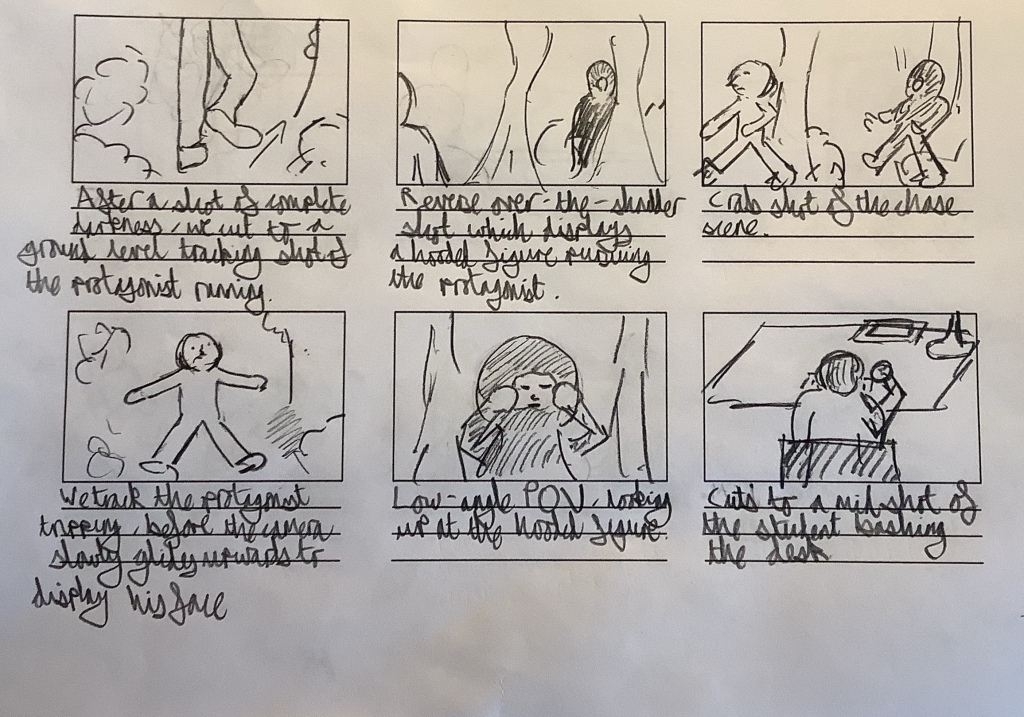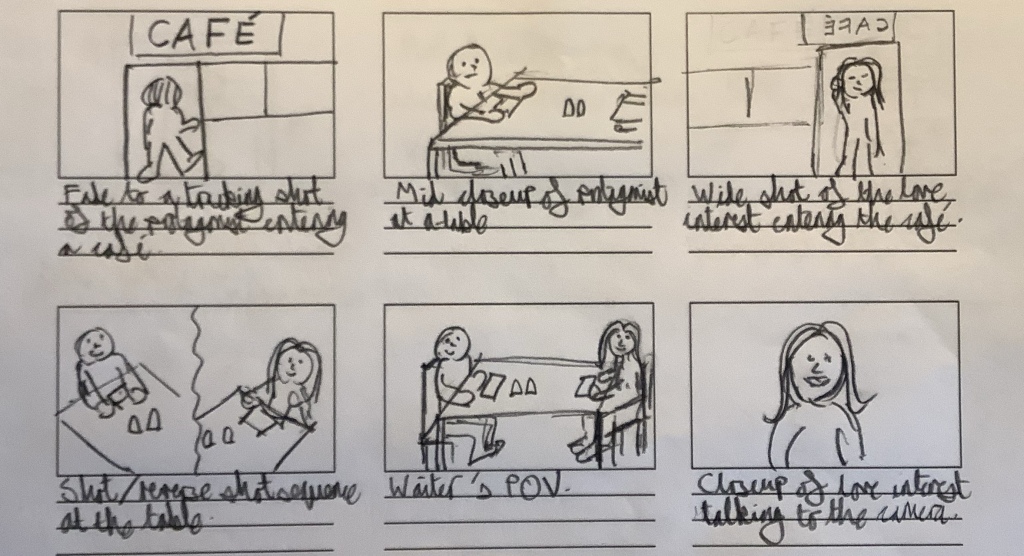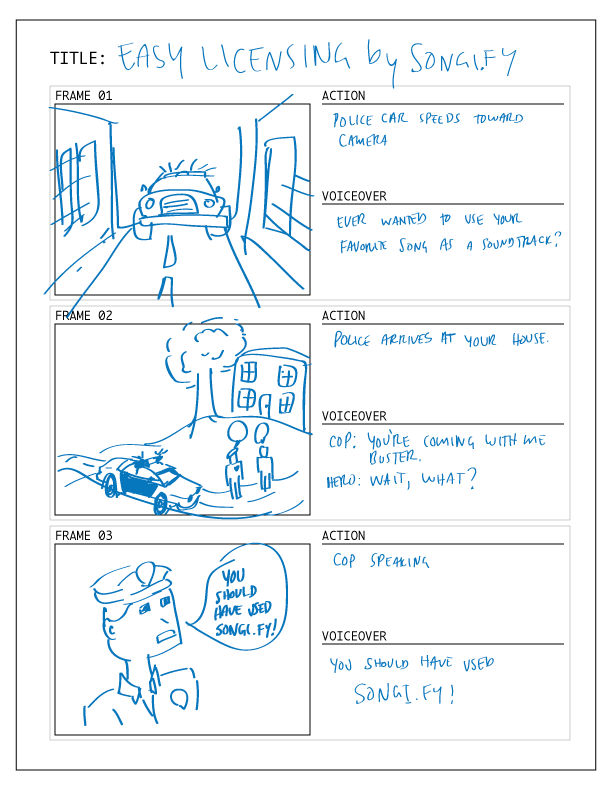Below is a list of the 21 planned important shots that I hope to include in my film, as well as the corresponding storyboards.
Important Shots
- Establishing wide of house
- Closeup of clock ticking
- Birds-eye-view shot of the student at a desk
- Closeup of calendar
- Tracking shot of student walking to curtains
- Mid closeup of student typing
- Ground level tracking shot of protagonist
- Over the shoulder shot looking at hooded figure
- Crab shot of chase
- Tracking shot of protagonist tripping, slowly dollies up to reveal face
- Low angle shot of hooded figure looking down
- Mid closeup of student at desk
- Tracking shot of protagonist in cafe
- Mid closeup of protagonist at table
- Wide shot of love interest walking through the door
- Shot/reverse shot at table
- Waiter POV shot
- Closeup of love interest talking to camera
- Closeup of student looking out of window
- Multiple snippets of the two ideas cut in sequence (editing)
- Over the shoulder shot of student watching TV
Storyboards






You must be logged in to post a comment.